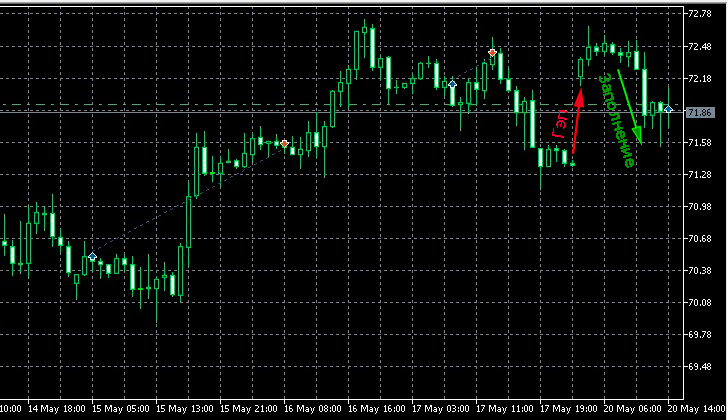Forex market patterns
The main patterns of Forex include stereotypes of exchange rate behavior in similar situations, by observing which you can determine in advance the direction of the transaction.

This approach makes it possible to significantly increase profits from transactions.
Forex patterns are frequently repeated events that cause the same reaction in the exchange rate and, when detected, make it possible to predict the further movement of the trend.
This aspect can be discovered independently; to do this, it is enough to simply conduct a detailed analysis of trend jumps over the course of a week or a month; any price change always has its own reason and sometimes the situation repeats itself with enviable consistency.
A careful study of market history can reveal a number of patterns based on such points as trading sessions, minimum and maximum points, price channels, the occurrence of gaps, taking into account the correlation between currency pairs and certain commodity groups.
Description of patterns and their use in Forex trading
1. Price channels - if you notice that for some time the price has repeated previous lows and highs several times, it means that a price channel has formed. In this case, there is a clear pattern in the Forex price movement, which allows you to quite accurately determine the entry point into the market.
2. Closing gaps - very often, after a weekend on the currency exchange, gaps form between the closing price and the opening price of the session, as a result, a certain gap appears in the quotes.
Statistics show that in most cases this gap will certainly close within a day.

3. Movement and rollback - with sharp jumps in the exchange rate, a reverse rollback occurs, while the following trend is always observed: the stronger the jump or fall in price, the more pronounced the correction will be.
Many people make money both on the main trend and on its correction.
4. Supply and demand - the forex market operates according to general economic laws, therefore an increase in demand or supply for a certain currency always causes a change in the exchange rate. Increased demand increases the price, and excessive supply causes it to decrease.
5. Expectation of news also affects the rate, as does the news itself - if forecasts for expected indices or important decisions are known, the rate will definitely move towards the news and can change its direction only if these expectations are not confirmed.
6. Sessions – the beginning and end of the European session more often end with a rise in the euro than in its fall. The same patterns can be observed in other sessions; they are discovered when observing price behavior.
7. Correlation - most currencies clearly react to changes in prices for goods such as gold, oil, and agricultural products. To identify a connection, it is enough to simply compare currency quotes and the dynamics of price changes for a certain group of goods and determine what type of correlation is presented - direct or reverse.
8. Spread size – there is also a Forex pattern: the lower the liquidity of a currency pair and the trading activity on it, the larger the spread, so be careful when placing pending orders.
This relationship can lead to unplanned losses as the spread expansion sometimes reaches tens of points.
9. Seasonal exchange rate fluctuations - it has been noted that most popular currencies are subject to seasonal exchange rate fluctuations; sometimes the direction of price movement on the charts for different years is almost the same.
And in conclusion, I would like to note that the most working Forex patterns will always be those that you have identified yourself, so analyze and compare, perhaps you will notice something that professional traders usually do not pay attention to.
Using the Forex patterns described above, it will not be difficult for you to create a simple trading strategy of your own, which in fact can turn out to be quite effective.
